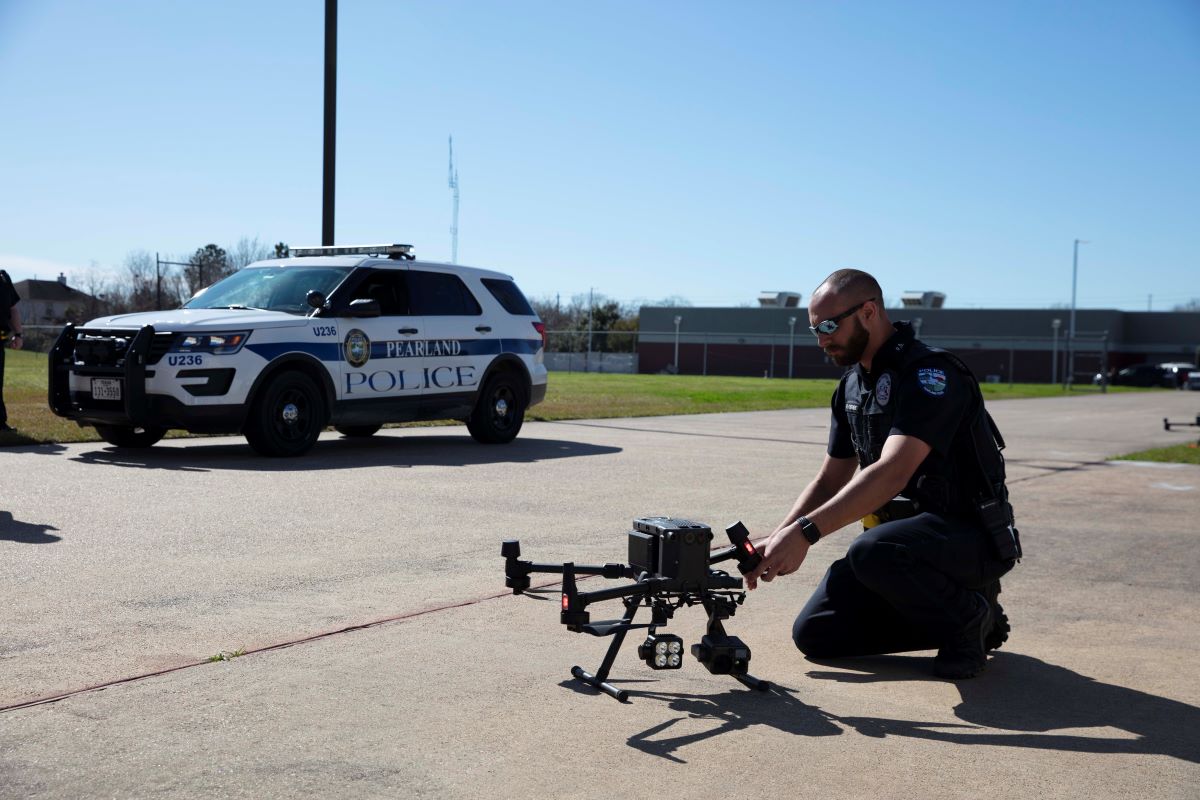
The Federal Aviation Administration (FAA) has authorized the Pearland Police Department in Texas to operate its drones as first responders beyond visual line of sight (BVLOS) without any visual observers.
Pearland is a rapidly growing city south of Houston with a population of 129,600 and 179 sworn police officers. It covers a mostly residential area of 49 square miles and includes major urban facilities such as hospitals, schools, colleges, and shopping centers.
Pearland PD introduced a drone as first responder (DFR) program because it wanted to improve the response to emergency calls. Drones can be dispatched immediately, circumventing traffic. And they can offer an advanced assessment of the incident upon arriving at the scene, thus reducing risks to officers. Having these “early eyes on scene” helps the police to determine the appropriate level of response, including reducing or increasing resource deployment.
DFR programs typically see highly automated drones in use, centrally managed by a small number of personnel. Having the waiver to operate BVLOS without visual observers, meanwhile, removes the requirement for the operator to be co-located with the drone. This potentially increases the ratio of drones to operators and helps to improve scale and efficiency.
Pearland PD achieved this milestone using Iris Automation’s Casia G ground-based air surveillance system and DroneSense’s situational awareness software. Casia G creates a volume of monitored airspace without the need to integrate any hardware onto the drone itself. Using computer vision technology, the solution alerts the Remote Pilot in Command (RPIC) to an intruder who presents a collision risk. The RPIC can then assess the risk and command the drone to maneuver to safe zones.
Read: Weed-hunting drones help police bust illegal marijuana farms
Chad Randall, assistant chief of police at Pearland Police Department, says, “In a climate where manpower is impacting first responders across the nation, having a fully BVLOS drone as first responder program greatly enhances resource allocation while maintaining a high level of situational awareness for first responder safety.”
Jon Damush, CEO of Iris Automation, adds:
Pearland PD has been operating Casia G systems since last summer, collecting and analyzing performance data and submitting it to the FAA, which resulted in this approval. It’s a testament to the department’s commitment to fully utilizing drones to provide more efficient services across its region and an important example of how a thoughtful concept of operation combined with our ground-based system mitigates air-collision risk enabling BVLOS operations.
Read: Partnership to help agencies deploy drones as first responders
FTC: We use income earning auto affiliate links. More.





Comments